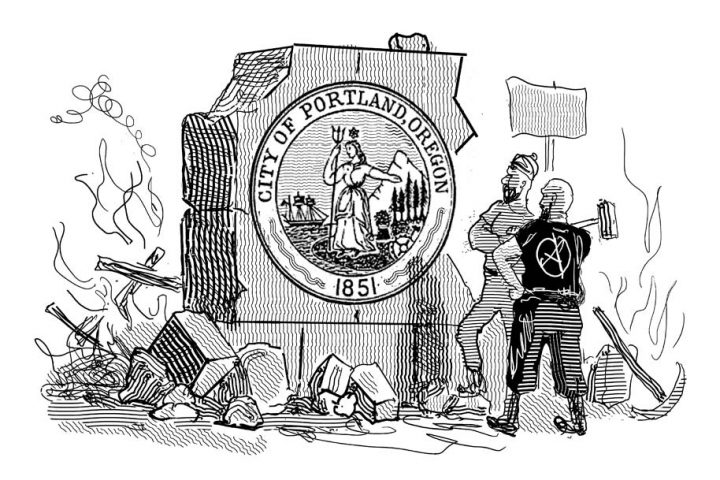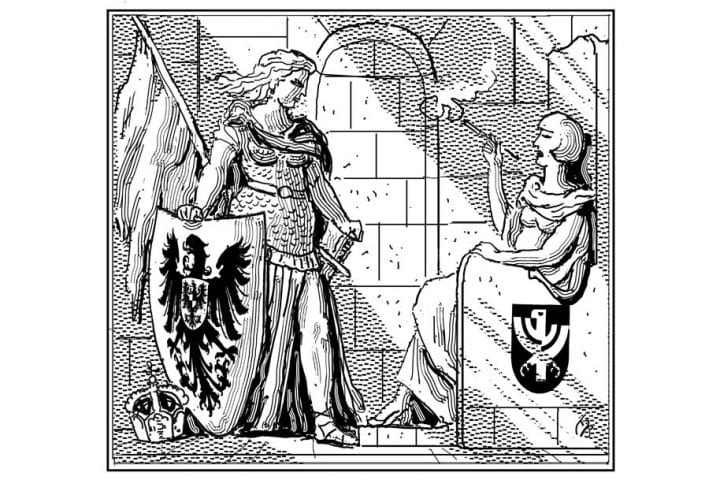Books Reviewed
Edmund Fawcett’s Conservatism: The Fight for a Tradition is an expansive volume covering conservative thought and practice since the late 18th century. Authored by a former political correspondent and literary editor of the prestigious British weekly the Economist, this book is unmatched in the scope and breadth of its treatment of the subject. Fawcett earlier published a study of similar range entitled Liberalism: The Life of an Idea (2014), and together these volumes provide a learned account of how two political traditions have shaped the rise and development of liberal democracy.
The present work is perhaps best described as part encyclopedia and part critical history. Its encyclopedic section includes a thumbnail biographical sketch of some 200 conservative notables, a Who’s Who of the entire school: political leaders from Benjamin Disraeli to Donald Trump and Boris Johnson, intellectuals from Edmund Burke to Irving Kristol and the late Roger Scruton. Another entry is a lexicon of keywords relating to conservatism, including such well-known classic terms as “prescription” and “tradition” and more recent and ambiguous expressions like “moderate-radical” and “hard right.” Only the most conscientious of readers, and honest of reviewers, are likely to make their way through this abundance of material, which mostly suits the purposes of browsing and reference.
* * *
Then there is the book. Written as a narrative history, it focuses on conservatism in four countries: Great Britain, Germany, France, and the United States. Fawcett divides his presentation into an initial period of conservative forerunners, from the 1790s through the 1820s, and four phases of conservatism’s development, beginning in 1830, 1880, 1945, and 1980. He supplies an overview of the political situation during each phase and for each nation, paying special attention to the actions of conservative political leaders. His synopses, remarkably interesting and informative, compress large swaths of history into relatively brief, cogent expositions.
What follows next is an analysis, again for each phase and nation, of the thought of noteworthy conservative intellectuals. Coverage of these figures comprises the largest and most important part of the book, making it a work above all of intellectual history. And what a prodigious project this turns out to be. No other author has come close to presenting a study of this dimension. The effort perhaps makes one think of Russell Kirk’s The Conservative Mind (1953), but Fawcett explores thinkers in four different countries, not two. His treatments, while relatively brief, manage to cover the main themes of these writers’ thought, and he concludes each presentation with a quick personal assessment of the merits of their work.
No doubt about it, Fawcett is a most intelligent and reliable interpreter of political thought. He rolls out his selected intellectuals one after another after another in what resembles an assembly line of conservatives, precluding any kind of systematic review. The book’s general character cannot be grasped without supplying a list, albeit only a partial one, of the thinkers examined: Burke, Maistre, Gentz, Chateaubriand, Stahl, Calhoun, Lamennais, Newman, Brownson, Hodge, Coleridge, Stephan, Gierke, Mallock, Sumner, Spengler, Schumpeter, Treitschke, Le Bon, Du Camp, Schmitt, Eliot, Gehlen, Maurras, Sorel, Weaver, Voegelin, MacIntyre, Finnis, and Sloterdijk. A few thinkers have been missed—what, for example, happened to Leo Strauss?—and others, such as the economists Friedrich Hayek and Milton Friedman, are quickly passed over because of Fawcett’s debatable insistence on breaking with common practice and classifying them primarily as liberals.
Most of the book’s readers will be familiar with some of these thinkers; almost no one will recognize them all. If someone asks what purpose so vast a survey serves, besides satisfying a desire to be comprehensive, the answer is that Fawcett has provided more than sufficient coverage to enable readers to decide which of these thinkers merit further attention and study. Conservatism is not a book for everyone, but banal as it sounds Fawcett has performed an invaluable service for eager and interested students of political thought. What does not exhaust them will only make them stronger.
* * *
There is another part to this book that is scattered strangely among a preface, a brief early chapter, a short conclusion, and a two-page coda. Its aim is to somehow pull things together and offer a general thesis, defining what conservatism is and what it can contribute to democratic governance. Is it really possible, however, to present a coherent account of conservatism? Fawcett answers in the affirmative, but he hedges at points by describing conservative thought as chaotic and, unlike liberalism, lacking “a canon.” So many competing variants of conservatism are mentioned along the way that one begins to wonder if there is any common core: his attempt to elaborate one seems to end in confusion.
Fawcett reveals in his preface he is “a left-wing liberal.” He pledges, nonetheless, to be an objective political analyst who will avoid the temptation of indulging in “celebration” or “caricature,” and goes on to remind his leftist allies of the need for humility, asking, “If we’re so smart, how come we’re not in charge?” (This question is based on a quick and rough calculation of the years conservatives and liberals have run their governments over much of the past century.) In his prescriptive argument for our own times, Fawcett points out the need to have conservatives who can “sustain democratic liberalism” and accept “liberal and democratic ground rules.” Liberal democracy appears to work well, in his judgment, when Left-liberalism leads and promotes change, and conservatives confirm liberal innovations, often managing them better than liberals. This formula for success only holds, however, when conservatives are of a responsible disposition—unlike recent types who derive from the “recalcitrant right” or are “populists.” In British terminology, Fawcett wants conservatives to be “wets,” or at any rate, damp.
This analysis, however, appears at times to be at odds with reality. Both Ronald Reagan and Margaret Thatcher came to be considered highly successful conservative leaders even though they were initially regarded by Left-liberals as anything but centrists. One led a conservative “revolution” and the other claimed to lead a party of “innovation, of imagination, of liberty, of striking out in new directions.” Fawcett is very harsh in his judgment of Brexit, yet it is certainly arguable that far from damaging liberal democracy, this bold and fundamental change will be its savior, rescuing Britain from being governed by an undemocratic, bureaucratic behemoth.
* * *
The basis for Fawcett’s conception of conservatism goes back to what he takes to be its original character at the outset of modern times. “Liberals embraced…capitalist modernity. Conservatives responded by opposing the liberal embrace.” Conservatism, he adds, was a reaction that “began life as an enemy of liberalism and never fully abandoned its reservations about democracy.” He sums this up with a nicely crafted metaphor: “Were politics chess, liberals had white; they moved first. Conservatives had black; they countered liberalism’s opening moves.” Liberals were the originators of progress, conservatives at their best were the followers.
This characterization of conservatism may work well enough in the case of European nations, where conservatism was connected to, though not fully defined by, defending the interests and positions of an elite of aristocrats. Labeled as “traditional conservatism,” this idea emphasized among other things respect for custom and tradition, connection to the nation as the seat of community, opposition to frequent changes, and a lack of enthusiasm for democratic governance. Elements of this idea of conservatism remain prevalent among many who think of themselves as conservatives today.
Yet this view of conservatism is marred by the fact that, even originally, it did not fully hold. It certainly does not fit the American case. The more conservative 19th-century American parties—the Federalists, the Whigs, and Republicans—were so far from being opposed to capitalist modernity that they were its proponents, and in many ways its originators. This was not a strict laissez-faire capitalism, but under Alexander Hamilton, Daniel Webster, and others an innovative set of measures designed to build capitalism and modern finance. Nor, certainly, can American conservatism, comparatively speaking, be considered the party that sought to limit democracy. Just the contrary, with the Civil War amendments and original civil rights legislation, they sought to extend it. Finally, early conservatives distinguished, in a way we no longer grasp today, between steady, sober advancement and sweeping, abstract progress.
The so-called philosophy of conservatism quickly evolved and took on different meanings. The opponent of capitalism and markets on the one hand, conservatism also became known as capitalism’s great champion on the other. And as the defender of steady order and security, conservatism also became the advocate of enormous and upsetting change. In practice, conservatism as we commonly know it includes people holding not only different but often opposing ideas; or if they hold many of the same ideas, they do so with greatly different emphases and priorities.
Anyone attempting to describe conservatism today would do well not to seek a stable and enduring definition of the term, but to identify it, at least in electoral competition, as a coalition of people who are opposed, for different reasons, to liberalism or progressivism or socialism. For a time it was enough to oppose centralized national planning in order to form such a coalition; enough to oppose Communist threats to bring together the coalition called fusionism; enough to mention Nancy Pelosi or Hillary Clinton or Alexandria Ocasio-Cortez to create an anti-socialist and anti-progressive coalition. What holds such coalitions together, temporarily, is not just views of economic matters, but cultural and political ideas, alliances to save versions of democracy and freedom, and to protect civil society. The fact is that if no such common foe is perceived, what we call conservatism would quickly split—in fact is splitting—into different parties. The failure of political analysts here is a simple one. It is to fall into the trap of thinking that just because there is a word in common, there must at heart be a common theoretical idea. But as is the case with so many words we use, this is not so.
* * *
Today, those seeking to reconstitute a conservative political coalition face a new, unprecedented set of challenges. As things often work in politics, of course, a renewed electoral success may come about on its own, as a large number of people across the board react against what they see as the leftist threat to deeply held beliefs and institutions. There is no doubt, however, that over the past decades systematic shifts in fundamental political and demographic realities have been driving new political reactions. Relations between elites and “non-elites,” whom the Left once called the “common man” or the “people,” have changed dramatically, which necessitates a more careful and precise use of the term “conservative.” Up until recently, most elites—the wealthier, the more highly educated, the more visible and famous—were aligned with the conservative voting coalition, though obviously for different reasons. The majority of the non-elites were aligned with the Left. For some time now, however, elites have been moving steadily to the left, in entertainment, in the media, in higher education, in upper reaches of the national bureaucracy, and in global business corporations. Non-elites have been moving just as steadily toward conservatism.
The new conservative coalition will be different from the ones that existed in the past. Opponents of today’s far Left will find that they have much to learn from conservative thought, and Edmund Fawcett can be their teacher. Yet a search for a single fixed idea of conservatism is not sufficient. A good strategist will determine which element of conservatism he favors and then think carefully of the electoral coalition that can best promote his aims.




